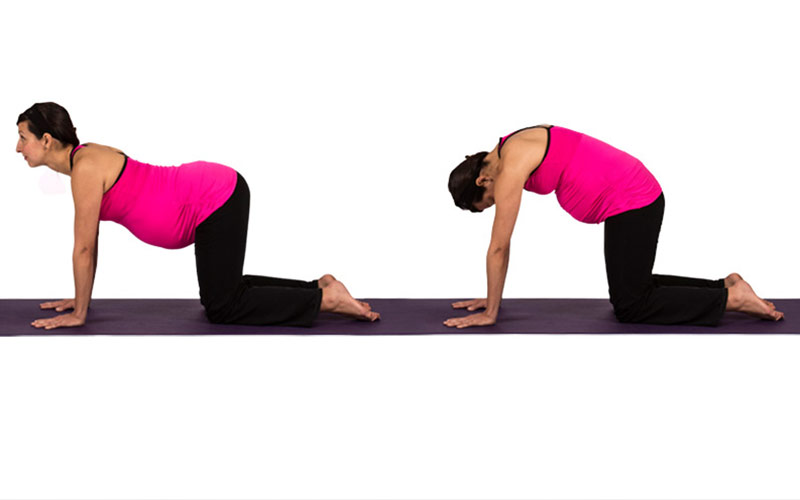Considerations when Choosing a Contraceptive Method
- Safety
- Protection from sexually transmissible diseases
- Effectiveness
- Acceptability
- Convenience
- Education needed
- Side Effects
- Benefits
- Interference with spontaneity
- Availability
- Expense
- Preference
Methods of Contraception
- Temporary
- Behavioral
- Hormonal
- Barrier – Spermicides
- Long-Term / Permanent
Types of Contraception
- Barrier contraceptives
- Hormonal contraceptives
- Sterilization
Note: No single method of birth control is the ??best? one. Each has its own advantages and disadvantages. Abstinence is the only 100% effective way to prevent pregnancy and STD??s
Barrier Contraceptives
Methods that physically or chemically block sperm from reaching an egg AND provide a BARRIER between direct skin to skin contact
Act as a physical block between you and your sexual partner
Great for STD protection!
Barrier Methods
- Male condom
- Female condom
- Diaphragm
- Cervical cap
- Spermicides
MALE CONDOM
Perfect effectiveness rate = 97%
Typical effectiveness rate = 88%
Latex and polyurethane condoms are available
Combining condoms with spermicides raises effectiveness levels to 99%
- Male condoms are 82 to 98 percent effective at preventing pregnancy
- Condoms can only be used once
- Do not use oil-based lubricants such as massage oils, baby oil, lotions, or petroleum jelly.They will weaken the condom, causing it to tear or break.
- Water-based are the best ?? can prevent breaking of condom.
- Good choices: Latex condoms and polyurethane
- Bad choices: Never choose ??natural? or ??lambskin?
FEMALE CONDOM
What is it? – A soft, loose pouch that is inserted in the vagina.Flexible rings at each end hold it in place.Can be put in up to hours before sex.
Not mandatory
How do you use it?– Insert the small ring in vagina, large ring stays outside partially covering labia.
Notes: Can be used if you are allergic to latex (made of nitrile).Men usually feel no reduction in sensation.
Access: Available at many pharmacies, clinics, and online
Effectiveness: 79-95%
- Made as an alternative to male condoms
- Polyurethane
- Physically inserted in the vagina
- Perfect rate = 95%
- Typical rate = 79%
- Woman can use female condom if partner refuses
Diaphragm & Cervical Cap
What is it? -A soft, silicone dome that covers the cervix w/ a flexible rim that holds spermicide
How do you use it? -Put a tbsp of spermicide in and slide it into the vagina.Protection lasts 2 hours, and needs to be left in for 6 hours after sex
Notes: Neither partners should feel the diaphragm.Get re-fitted if you gain/lose 15 pounds
Access: Doctor/clinic visit needed for prescription and fitting
Effectiveness: 82-94%
Spermicides
- Cream
- Gel
- Foam
- Film
- Suppository
- Sponge
What is it? Chemicals that go in the vagina before sex.Immobilize or kills sperm.Most work for 1 hour, sponge for 24 hours
How do you use it? Put in vagina following packaging directions.Most need to be put in 10 minutes before intercourse.
Notes: Key ingredient is Nonoxynol 9.Neither partner should notice spermicide.
Access: Easy to buy in a pharmacy
Effectiveness: 72-91%
Behavioral Methods
- Predicting fertility: Basal Body
Temperature & Calendar method
- Withdrawal/Pullout
- Abstinence**- The only 100% effective way to prevent pregnancy, STIs, HIV/AIDS
Withdrawal/Pullout
What is it ? The man takes his penis out of the vagina before he ejaculates
How ? The male needs to ejaculate away from female; sperm on legs and labia can still travel into vagina
Notes: Depends on a male??s self knowledge and self control
Access: Free, available to anyone
Effectiveness: 78-96%
How effective is it?
- Of every 100 women whose partners use withdrawal, 4 will become pregnant each year if they always do it correctly.
- Of every 100 women whose partners use withdrawal, 27 will become pregnant each year if they don’t always do it correctly.
- Pregnancy is also possible if semen or pre-ejaculate is spilled on the vulva.
Hormonal Methods
- Methods that prevent the release of an egg (ovulation)
- Prevents a fertilized egg from implanting in the uterus (prevents pregnancy).
- NO hormonal methods reduce chances of STD??s!
Types of Hormonal Methods
- The Pill
- The Patch
- Vaginal Ring
- The Shot
- IUD
- Emergency Contraception
- These methods add chemicals similar to hormones to stop the release of an egg and weaken the sperm.
- The hormones change your cervical mucus and uterine lining, slow sperm, and reduce ability of fertilized egg to implant into uterine wall.
Oral Contraceptives
Also called ??the pill,?some contain estrogen, progestin, or mix of other hormones depending on pill
The pill is 91 to 99 percent effective at preventing pregnancy & is always prescribed by the doctor.
A pill is taken at the same time each day (once a day for three weeks, no pill fourth week -will get menstrual period)
What is it? –A pill taken orally every day at about the same time
Notes: There are many different brands.Your doctor can help you find the right one for you. Your period can occur monthly, every 3 months, or not at all
Access: Prescription needed
Effectiveness: 91-99.7%
How does the pill work?
- Stops ovulation
- Thins uterine lining
- Thickens cervical mucus
Positive Benefits of Birth Control Pills
- Prevents pregnancy
- Eases menstrual cramps
- Shortens period
- Regulates period
- Decreases incidence of ovarian cysts
- Prevents ovarian and uterine cancer
- Decreases acne
Side-effects
- Breast tenderness
- Nausea
- Increase in headaches
- Moodiness
- Weight change
- Spotting
??The Patch? ?? Ortho Evra
What is it? A bandage-like patch that sticks to your skin
How do you use it? Changed weekly, no patch on 4th week.Hormones are absorbed through the skin
Notes:Less effective if you weigh over 198 pounds.May cause skin irritation.
Access: Prescription needed
Effectiveness: 91-99.7%
Vaginal Ring/Nuvaring
What is it? A clear, soft, flexible 2 inch circle worn in the vagina
How to use it? The body absorbs hormones from the ring through vaginal wall.The ring is inserted and left in the vagina for 3 weeks.
Notes: One size fits all, neither partner usually feels the ring
Access: Prescription needed
Effectiveness: 91-99.7%
- The birth control ring releases the hormones progestin and estrogen
- It is 91 to 99 percent effective at preventing pregnancy
- Ring goes inside vagina up around your cervix
- You wear the ring for three weeks, take it out for the week you have your period, and then put in a new ring
- This method does not protect you from HIV or other STDs.
The Shot? ?? Depo Provera
What is it? A long acting hormone injection
How do you use it? Female is given a shot one time every 3 months
Notes: Not reversible- once the injection occurs, the hormones are in the woman for at least 3 months.It may take a long time to get pregnant after the shot. More chance of weight gain than any other method
Access: Clinic / doctor visit needed every 3 months
Effectiveness: 94-99.8%
- Birth control shot given once every three months to prevent pregnancy
- 99.7% effective preventing pregnancy
- No daily pills to remember
Birth Control Shot
- Every 3 months (or 12 weeks), women get shots of the hormone progestin in the buttocks or arm from their doctor.
- It is 94 to 99 percent effective at preventing pregnancy.
- It does not protect you from HIV or other STDs
Side Effects
- Irregular menstrual bleeding and spotting for 3-6 months!
- NO PERIOD after 3-6 months
- Weight change
- Breast tenderness
- Mood change
*NOT EVERY WOMAN HAS SIDE-EFFECTS!
Emergency Contraception
- Also known as the ??morning after pill?
- The pills are 75 to 89 percent effective at preventing pregnancy
- Can be take up to 3 days(72 hrs) AFTER unprotected sex (depending on brand)
- Effectiveness decreases after 24 hours
- Emergency contraception should only be used after no birth control was used during sex, or if the birth control method failed, such as if a condom broke
When should I use it?
- The condom broke or slipped off, and he ejaculated in your vagina.
- You forgot to take your birth control pills, insert your ring, or apply your patch.
- Your diaphragm or cap slipped out of place, and he ejaculated inside your vagina.
- You miscalculated your “safe” days.
- He didn’t pull out in time.
- You weren’t using any birth control.
- You were forced to have unprotected vaginal sex, or were raped.
How does it work?
The hormones in the morning after pill work by keeping a woman’s ovaries from releasing eggs ?? ovulation. Pregnancy cannot happen if there is no egg to join with sperm. The hormones in the morning after pill also prevent pregnancy by thickening a woman’s cervical mucus. The mucus blocks sperm and keeps it from joining with an egg.
Long-Term / Permanent
Female- Tubal ligation
Male- Vasectomy
- These procedures are permanent, and are usually done by people 35+ years
- Both procedures are done in a doctor??s office
IUD: Copper (10 years)
Tubal Ligation (Female)
The fallopian Tube is ligated and sperm and ovum can no longer meet.A small incision is made in the abdomen to access the fallopian tubes. Fallopian tubes are blocked, burned, or clipped shut to prevent the egg from traveling through the tubes
Recovery usually takes 4-6 days
- Tubal ligation or ??tying tubes.?
- A woman can have her fallopian tubes tied (or closed) to stop eggs from being fertilized
- Over time, the ends of your fallopian tubes could fuse back together, and it may be possible to get pregnant
VASECTOMY (Male)
This operation is done to keep a man??s sperm from going to his penis, so his ejaculate never has any sperm in it that can fertilize an egg. Operation is more simple than tying a woman??s tubes. A small incision is made to access the vas deferens, the tube the sperm travels from the testicle to the penis, and is sealed, tied, or cut. After a vasectomy, a male will still ejaculate, but there won??t be any sperm present
- It has no effect on potency
- Male hormones are still produced, so male secondary sex characteristics are not affected
- Sperm production continues
Vasectomy
- Patient Teaching:
- Apply ice to scrotum
- Moderate activity for two days
- Sterility is not immediate –some sperm will remain in the sperm ducts so, the male must have ejaculations to rid the ducts of these sperm
- After he has 2 negative sperm counts, he then can resume sexual activity without use of another contraceptive.
Intrauterine Device
- It is placed inside the uterus by a doctor.
- 99% effective at preventing pregnancy
- Copper IUD: Can stay for up to 10 years – Interferes with sperm, fertilization, and prevents implantation
- Hormonal IUD: Can stay for up to 5 years – It releases a small amount of hormone each day to keep you from getting pregnant.
Intra Uterine Device (IUD)
What is it? A small plastic ??T? with a string inserted into the uterus
How do you use it? Releases synthetic progestin hormone that changes cervical mucus, fallopian tubes and the uterine lining.Stops or slows sperm and egg
Notes: Lasts 5 years.Insertion can cause a few minutes of pain, but removal is fast and easy
Access: Clinic / doctor visit needed for insertion & removal
Effectiveness: 99.8%
Content Credits: Dr. Sunitha P Shekokar


 Toll Free Number
Toll Free Number












 This can be a result of:
This can be a result of:










